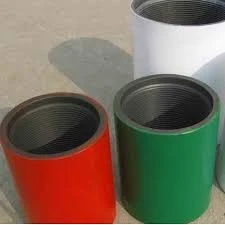- Afrikaans
- Albanian
- Amharic
- Arabic
- Armenian
- Azerbaijani
- Basque
- Belarusian
- Bengali
- Bosnian
- Bulgarian
- Catalan
- Cebuano
- Corsican
- Croatian
- Czech
- Danish
- Dutch
- English
- Esperanto
- Estonian
- Finnish
- French
- Frisian
- Galician
- Georgian
- German
- Greek
- Gujarati
- Haitian Creole
- hausa
- hawaiian
- Hebrew
- Hindi
- Miao
- Hungarian
- Icelandic
- igbo
- Indonesian
- irish
- Italian
- Japanese
- Javanese
- Kannada
- kazakh
- Khmer
- Rwandese
- Korean
- Kurdish
- Kyrgyz
- Lao
- Latin
- Latvian
- Lithuanian
- Luxembourgish
- Macedonian
- Malgashi
- Malay
- Malayalam
- Maltese
- Maori
- Marathi
- Mongolian
- Myanmar
- Nepali
- Norwegian
- Norwegian
- Occitan
- Pashto
- Persian
- Polish
- Portuguese
- Punjabi
- Romanian
- Russian
- Samoan
- Scottish Gaelic
- Serbian
- Sesotho
- Shona
- Sindhi
- Sinhala
- Slovak
- Slovenian
- Somali
- Spanish
- Sundanese
- Swahili
- Swedish
- Tagalog
- Tajik
- Tamil
- Tatar
- Telugu
- Thai
- Turkish
- Turkmen
- Ukrainian
- Urdu
- Uighur
- Uzbek
- Vietnamese
- Welsh
- Bantu
- Yiddish
- Yoruba
- Zulu
Understanding Tubing Crossovers for Efficient Oil and Gas Production Systems
Understanding Tubing Crossover A Key Component in Oil and Gas Operations
In the oil and gas industry, efficient operation and reliable equipment are essential to ensure the success of exploration and production activities. One crucial component in the flow of resources is the tubing crossover, a device that plays a significant role in transporting fluids from the well to surface facilities. The tubing crossover connects different sized tubing or piping, facilitating the flow of oil, gas, or other fluids in various operational scenarios. This article delves into the importance, functionality, and applications of tubing crossovers in the energy sector.
What is a Tubing Crossover?
A tubing crossover refers to a mechanical device or fitting that allows for the transition between different sizes or types of tubing within a well. It is primarily used in oil and gas extraction, where the characteristics of the fluid being transported can vary significantly. The crossover is designed to ensure a smooth and uninterrupted flow of materials, accommodating changes in fluid properties, pressure, and temperature.
The Importance of Tubing Crossovers
One of the key reasons tubing crossovers are vital in the oil and gas sector is their ability to maintain the integrity of the fluid transport system. When drilling for oil or gas, operators frequently encounter varying pressures and fluid viscosities. Without the proper crossover connections, the risk of equipment failure or downtime increases, potentially leading to substantial financial losses.
Additionally, tubing crossovers are designed with durability in mind. They must withstand high pressures and corrosive environments typical of subsurface operations. This durability ensures that the equipment can operate reliably over extended periods, reducing the frequency of maintenance and replacement.
How Do Tubing Crossovers Work?
tubing crossover

The working principle of tubing crossovers is relatively straightforward. These devices typically feature threaded ends that allow for easy connection to various pipe sizes. When installed, a crossover enables a seamless transition, allowing fluids to move from a smaller diameter pipe to a larger one (or vice versa) without causing turbulence or significant pressure drop, which could hinder effective flow.
Engineers design tubing crossovers with specific attention to flow rate, pressure ratings, and environmental conditions. By carefully selecting crossover designs, operators can maximize efficiency and minimize the risk of well control problems.
Applications in Oil and Gas Operations
Tubing crossovers find numerous applications in oil and gas operations, particularly during drilling and production phases. In drilling operations, crossovers may be employed to connect different sections of drill pipe or casing, ensuring that the drilling fluids circulate adequately throughout the wellbore.
During production, crossovers are often utilized to connect different sections of production tubing to enhance fluid extraction. They facilitate the movement of various fluids, such as water, oil, and gas, through the production system, ensuring that resources are efficiently brought to the surface.
Additionally, tubing crossovers play a vital role in intervention and workover operations. When equipment needs to be inserted or removed from the well, tubing crossovers allow for flexible configurations that can adapt to changing conditions in the wellbore.
Conclusion
In summary, tubing crossovers are indispensable components in the oil and gas industry, enabling the effective flow of fluids from subsurface to surface operations. Their robust design, ability to accommodate various tubing sizes, and contribution to operational efficiency make them a key consideration for engineers and operators alike. As the industry continues to evolve and seek more efficient extraction methods, the role of tubing crossovers will remain critical in ensuring the reliability and effectiveness of oil and gas operations. Ultimately, understanding and implementing the best crossover solutions contribute significantly to the successful management of resources and the overall productivity of the sector.
-
Well Casing Extension Couplings – Applications and InstallationNewsJun.06,2025
-
Types of Crossover Subs in Drilling & CompletionNewsJun.06,2025
-
Key Features of High-Quality Tubing Pup JointsNewsJun.06,2025
-
Installation and Maintenance Tips for Steel Couplings for PipeNewsJun.06,2025
-
How to Select the Right Pup Joint for Oil & Gas OperationsNewsJun.06,2025
-
Applications of Stainless Steel Pipe CouplingsNewsJun.06,2025







